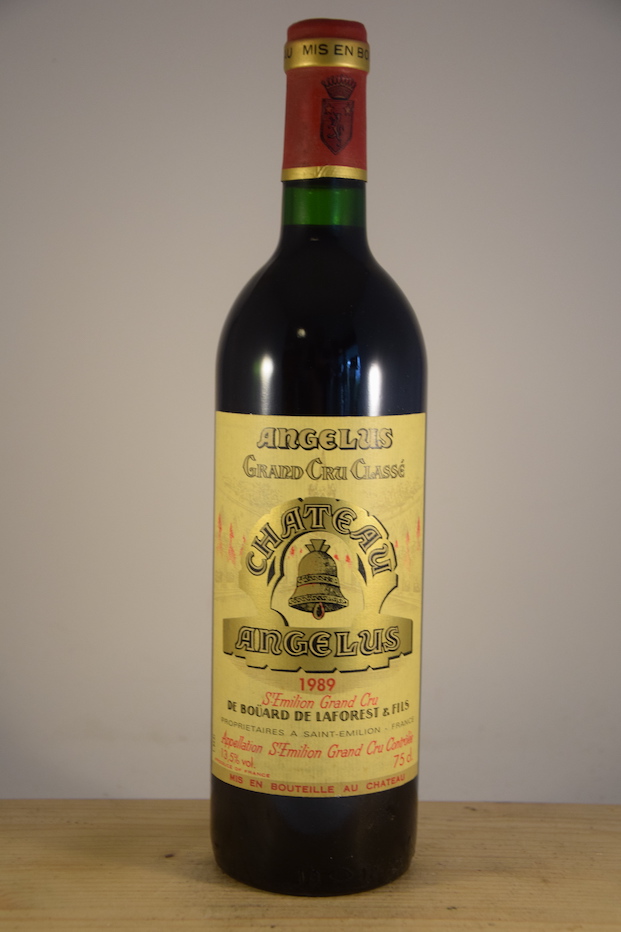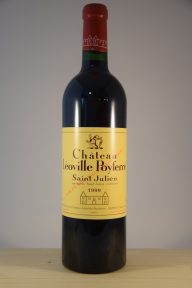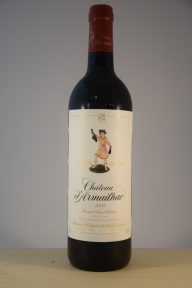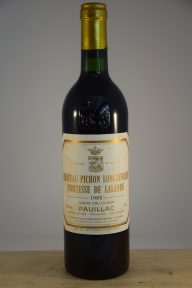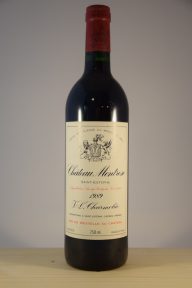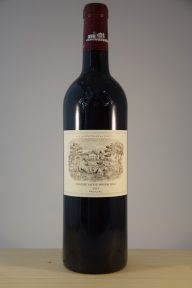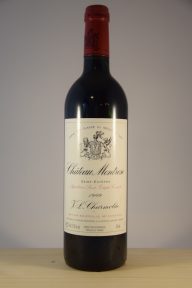Description
Gabriel
| Drinking maturity | Drink |
|---|---|
| Valuation | 19/20 |
| I had either missed this wine at the barrel tastings, or it really was a late bloomer. If I look at my notes, it gained a little bit year after year, only really earning these 18/20 points in its first enjoyment phase. However, it will retain its fine dryness and barely perceptible bitterness in the extract for the rest of its life. 90: Barrel sample (16/20): Fat, lush nose with cooked fruits. Fine bitterness in the tannins, promising wine. Drunk with Walter Kaufmann in 1992: Amazingly open nose, characterised by dark barrique toast and blackberries. Extremely fine and densely coated on the palate. Not as over-roasted as some other '89s - i.e. with a direct display of fruit on the palate, slightly behind its potential. Very impressive 1995: earthy, sweet bouquet; lots of concentration, cooked cassis, precious wood, rosewood. Juicy palate, not as lush as other '89s, more focussed on full-bodied elegance, has reduced the former dryness in the extract somewhat and develops a lot of complexity, pleasant tannin, nice support, long finish. One year later: Cold smoke in the hot, corinthian bouquet, dried plums; despite everything, little sweetness. Finely sandy on the palate, notes of soya, dry components in the tannins. In subsequent samples, it became increasingly rounder and gradually lost its bitterness. 98: Drank blind next to the 89 Mission: The enjoyment phase is now beginning and the development is still positive, it is getting fatter and the aromas are great - a reason to round it up (18/20). 02: Bernard Pujol brought a magnum bottle: Still dry and hugely concentrated; prunes, black olives, dark crust of pumpernickel bread. More fruit on the palate; cassis and coffee, a warm wine that needs at least an hour of air (18/20). 02: Also sealed in the normal bottle, wonderful herbal scent, walnuts, white pepper, not particularly rich in finesse for a St. Emilion, but very powerful. Increases and can soon reach 19/20 points. 03: The bouquet is initially somewhat vegetable, shows wilted leaf notes, maggi, dried shi-take mushrooms, slightly fishy and very developed, but then improves visibly with air and remains very fat on the nose. Soft, round palate, rather low acidity, which gives the wine a plummy, but also gently plump contour, gently drying, finely structured tannins. It's fun now, but somehow lacks the right class. This wine has been rather unreliable since its first contact with barriques (barrel sample 16/20) and has repeatedly shown itself to be questionable on several occasions. Some bottles are absolutely great, but quite a few are disappointing. If you want to experience a mature Angélus at its best, you should stick to the reliable and brilliant 1988 and 1990 vintages. There seem to be different bottle qualities!?! (17/20). 06: Surprisingly, it has improved again and is now also at 18-point level if you decant it for half an hour and enjoy it rather chilled: Dark garnet, deep in the centre, showing a fine, matching edge of ripeness on the outside. Spicy bouquet, black peppercorns, prunes and a terroir note reminiscent of a great Hermitage. Firm, full-bodied on the palate, with a delicate spicy bitterness on the tongue, the tannins are slightly dry and mix with the wine fat when the air enters, very spicy finish, but the hint of bitterness, which can also be described as a spicy component, remains until the aromatic finish. 09: We recognised a magnum on Angélus blind within seconds because of the fine bitterness on the tongue. 10: That was such a terrible magnum tapping weekend. First, on Sunday, the magnum of 1993 Grüner Veltliner from Knoll, which might have scored 20/20. And then on Monday this magnum of Angélus 1989, but I had to serve it because I had planned to serve it with the cordon bleu that my wife Karin had prepared. And there were lemons to squeeze, which Hubert de Bouard had given us the weekend before when we were his guests. So I had to get a second magnum from the cellar. This was hugely concentrated and flavoursome, like a great Médoc. I don't think there is another Saint Emillion that exudes so much power and flavour after 20 years. This double bottle was 19/20. 12: And again at the Château. A sensational wine with herbs, currants, tar and chocolate and malt notes. I was blown away. And the magnum was gone quickly. So quickly that Hubert went back to the cellar... The flavour of the 1989 is now legendary! (19/20). 17: Magnum. Medium-dark wine red, gently cloudy in the centre, brightening slightly at the edge. Intense bouquet, smoky notes, liquorice, lots of plums, pumpernickel bread, goes deep and shows a wonderfully corinthian sweetness. It then developed steadily in the air. So it liked the air. On the palate, it's almost all black berries, showing freshly crushed Szechuan peppercorns, which add enormous flavour to the rich extract. I particularly enjoyed this Angélus vintage. This was a fabulous magnum. (19/20). 17: With Lucien and Rita in Ste Maxime. The nose shows more Cabernet than Merlot. That's why I was looking for the left bank in this blind tasting. The palate still has this noble, bitter flavour on the tongue, a gentle, dry flow. But easily holds up to decanting. (19/20). 18: Extremely dark, rich, still very youthful. Shows an intense bouquet, with a balance between plummy fruit, residual cassis and earthy, truffled undertones. In the second attack; lots of black pepper notes and Brazilian tobacco. Outrageously powerful on the palate, still showing a demanding astringency. The extract is finely friable, the finish gigantic with almost exclusively black berry flavours. There is a hint of green-spiced Cabernet in this hot wine at the very end. Not disturbing - but adds even more character. Seemed much younger than the neighbouring Pomerols. A legend in the making. (19/20). | |


